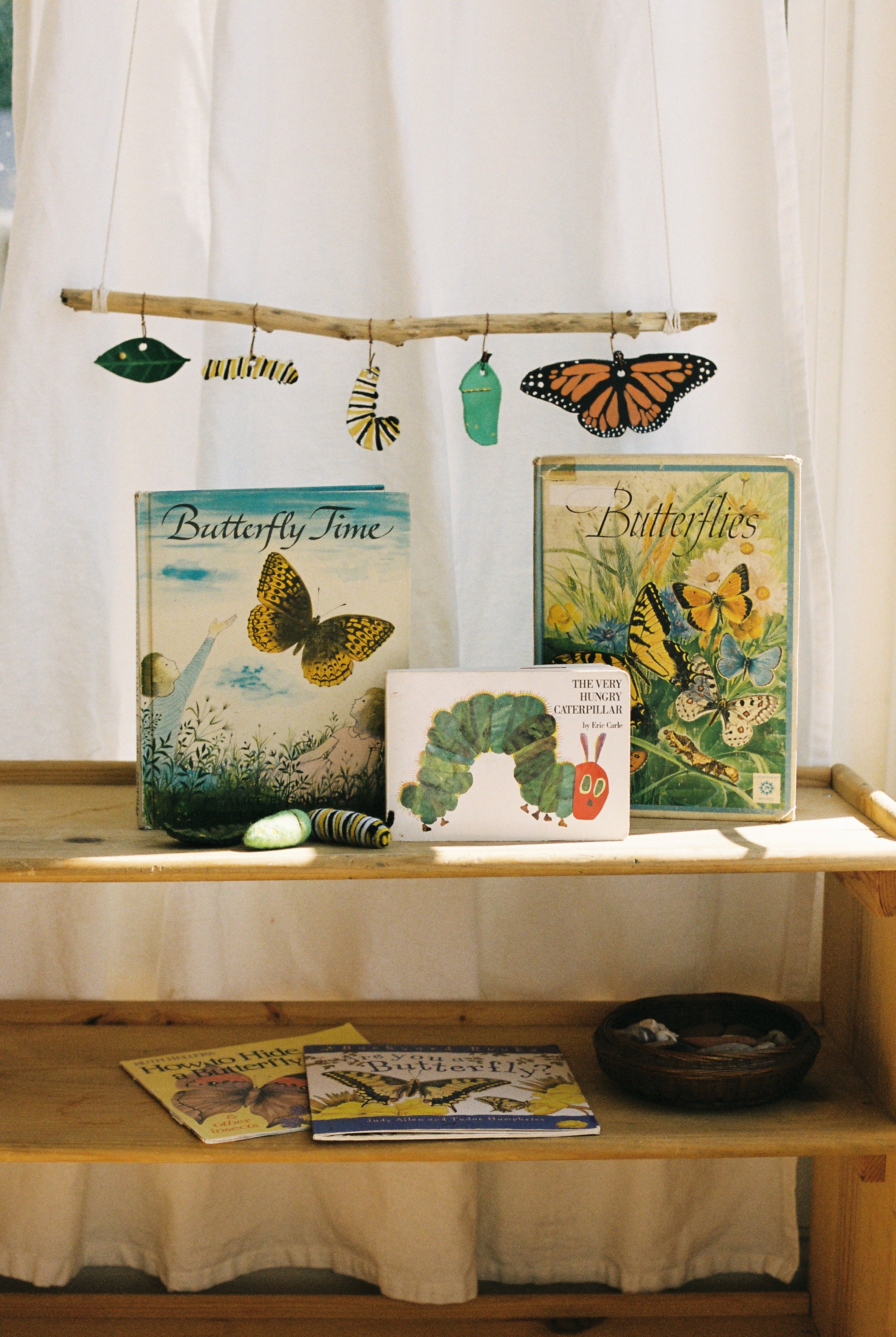
Egg
LESSON 1
Children will explore caterpillars through observation, playful activities, and a craft based on "The Very Hungry Caterpillar."
OR another type of caterpillar kit
The book “The Very Hungry Caterpillar” by Eric Carle.
Prepare materials for butterfly life cycle creation of choice: print the butterfly life cycle printable and color using crayons, colored pencils, or watercolor paint. OR create your own using construction paper, playdough, beeswax modeling clay, needle felting, natural materials, pasta noodles, or clay. Take into consideration their age and which one you think your child would enjoy creating the most.
Materials
Gather materials for lesson.
Preparations
Awaken children’s interest in caterpillars.
Promote children’s active participation in new hands-on experience.
Promote scientific thinking and questioning in children.
Observe fine and gross motor skills in children.
Objectives for Teachers
Children strengthen their knowledge about caterpillars.
Children practice observation skills.
Children practice fine motor skills. through drawing, coloring, cutting, gluing, molding, etc.
Children practice gross motor skills through movement activity.
Children develop empathy toward animals.
Objectives for Children

Collect and Connect
Come up with actions to “The Fuzzy Little Caterpillar,” and practice singing it together.
The Fuzzy Little Caterpillar
(To tune of the ‘Incy wincy spider’)
The fuzzy little caterpillar,
Curled upon a leaf.
Spun her little chrysalis,
And then fell fast asleep.
While she was sleeping,
She dreamt that she could fly.
And later when she woke up,
She was a butterfly.

Activity Flow
Do you know what is inside the cup?
What do you know about caterpillars?
What do you want to know about caterpillars?
How does the caterpillar move around?
Place a cup of caterpillars in front of your child and watch them together. You can ask your child questions like:
2. Allow your child the choice to try holding the caterpillar. If they feel comfortable, come up with some rules together beforehand to keep the caterpillar safe. Allow the child to let the caterpillar crawl on their hand. Encourage the child to take a closer look at its body and watch how it moves and feels.
3. After observing the caterpillars, find a comfortable place to sit and read the first two pages of the story, “The Very Hungry Caterpillar,” by Eric Carle.
4. After reading the first two pages, ask your child:
What was on the leaf?
What popped out of the egg?
Where do you think the egg came from?
5. Next, explain that caterpillars begin as an egg, and then they hatch into caterpillars. Encourage your child to crawl around like a caterpillar. This should be a playful and enjoyable moment. Feel free to join your child and laugh a little.
6. Conclude this lesson by creating the first part of the butterfly life cycle. Reflect on the story and see if the child remembers what was on the leaf on the first page in the story. Create an egg on a leaf with your materials.


